Premium Only Content
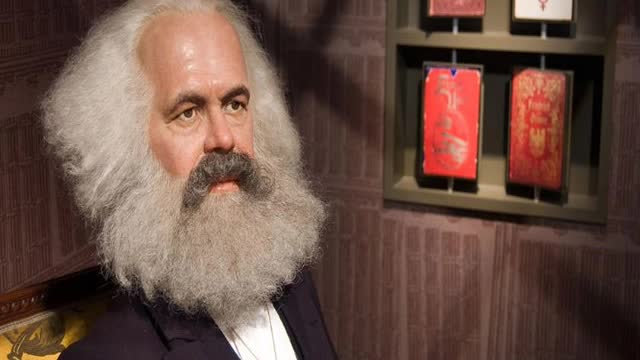
Commentary: The Origins and Destiny of Critical Theory
Commentary: The Origins and Destiny of Critical Theory
Karl Marx once famously commented that Hegel wrote that history repeats itself. Marx then supplemented this by noting that this happens the first time as tragedy, the second as farce. And it is perhaps ironic that this is nowhere more true than among some of Marx’s own progeny, the critical theorists. Critical theory’s first coming was as a sophisticated reappropriation of Hegel for Marxist thought in response to the tragedies of the early 20th century — the Russian Revolution, the failure of the German Spartacist uprising, and the rise of Nazism and Stalinism. Its founding fathers were deeply immersed in the Western philosophical tradition and men of substantial intellect. Its second coming — that of our own day — is as the theoretical part of the farce that is postmodern identity politics, often in a form that feminist philosopher Kathleen Stock has declared to be “adolescently, simplistically monotonic.” From tragedy to farce, as Marx would say.
The problem that gave birth to critical theory was the obvious failure of the narrowly economic Marxism of the Second International, which was the focal point for international socialist thinking and action from 1889 to 1916. For Second International Marxists, the development of capitalism was meant to lead inevitably to revolution and a communist society as the capitalist system collapsed under its own contradictions. The problem was the success of a Marxist revolution in Russia (which was not an advanced industrial capitalist society and therefore lacked a significant industrial working class) and the failure of the same in Germany (which was the most advanced industrial nation in the world, had a well-developed proletariat, and had just lost a war — ideal conditions in theory for a workers’ revolution). The fate of these two nations cast significant doubt on the ability of economic development alone to deliver the revolution. In this context, a number of thinkers, most notably the German Karl Korsch and the Hungarian György Lukács, turned their thoughts to issues of consciousness.
To do so, they revisited the roots of Marx’s own thinking in the thought of Hegel. Marx famously declared that he had turned Hegel upside down (and therefore the right way up) by moving from Hegel’s focus on ideas to focusing on material conditions. Put simply, where Hegel had seen thought as foundational to the material conditions and relations of society, Marx saw material/economic conditions as foundational to the way people think. This materialist revolt against idealism was an article of faith for Marxists in the early 20th century.
Of the two men, Lukács was the most influential. Key to his thinking was his rehabilitation of Hegel in the service of a new, more philosophical approach to Marxism. Hegel’s concept of alienation led Lukács to reflect upon how individuals thought about and experienced themselves in relation to society. And the problem that history revealed was that the economic engine of capitalism was not enough to make this consciousness a revolutionary one. Workers needed, for example, to identify themselves first and foremost with other workers and not by nationality or region. And they needed to come to understand their historic destiny as the instrument of revolution. That could only be achieved by developing a critique of the social and cultural conditions of the capitalistic status quo. Indeed, it was no coincidence that Lukács began his career as a literary critic who drew eclectically upon other thinkers, such as the sociologists Georg Simmel and Max Weber.
In his important work, History and Class Consciousness, Lukács made a number of claims that were to be developed in later critical theory. First, he identified “ideology” as the class consciousness of the bourgeoisie projected onto the proletariat. In layman’s terms, this meant that the values, practices, and claims about reality that the middle class needed to maintain its status were effectively made normative for all and not simply by imposition. The working class internalized these values and thus were willing, if unwitting, instruments of their own oppression. Marx had made a similar point about religion in his Critique of Hegel’s Philosophy of Right and had thus demanded that critique of religion be the foundation of revolutionary politics: stripping away false hope being a necessary prerequisite to workers understanding and embracing true hope. Lukács’ second point referred to reification, a term he used to refer to the way in which social and economic relations took on lives of their own in the consciousness of the people and thus came to drive how such relations were understood. Again, building on Marx — this time the latter’s notion of the commodity fetish, the attribution of power to something that had no intrinsic power — he pointed to the way in which socially constructed conventions and arrangements took on a life and power of their own and to which the individual was then subordinated in status and importance. We see this today in how we speak of “the economy,” as if there was some entity that existed independently of the individuals involved in economic production.
The kind of Marxism that Lukács represented might be termed “critical Marxism.” Its task was the unmasking of the socially constructed ideas and institutions that presented themselves as real, solid, natural, and thus irresistible facts of life but were really keeping the corrupt system in place. It was this mantle that a group of thinkers at the Institute for Social Research at Goethe University in Frankfurt assumed.
Founded in 1929, the Institute became home to what is known as the Frankfurt School. As with Lukács and Korsch, its leading lights sought to reconstruct Marxism by drawing upon the earlier Hegelian tradition out of which the later Marx emerged. In so doing, they developed a rich and variegated tradition of a revolutionary criticism of modern Western society that ranged from discussion of aesthetics to sexual morality and psychology to photography. While the range of critical theory produced by the Frankfurt School is vast, a number of influential themes can be easily identified.
First, and most basically, they saw critical theory as revolutionary. The early Frankfurt School took very seriously the spirit of the 11th of Marx’s Theses on Feuerbach. This declared that “the philosophers have only interpreted the world in various way; the point is to change it.” Philosophy was thus not to be a merely descriptive discipline, but a transformative one. As Max Horkheimer declared in an early programmatic essay, “Traditional and Critical Theory,” its goal was the achievement of social justice.
The connection between theory and practice in Marx had always been vexed, struggling with the obvious logical problem inherent in a theory that itself claimed to prioritize practice over theory. But for the Frankfurt School, theory was practice. It was not just theory but critical theory. And this theoretical critique of society was a key element in the revolutionary transformation of society.
Second, there was the notion of false consciousness. The early members of the Frankfurt School were all Jews living in a Germany where the anti-Semitic far right, specifically National Socialism, was ascendant. That Nazism drew much of its support from the working class was an obvious problem: why did large numbers of the proletariat throw their weight behind a party that, from a Marxist perspective, clearly served the interests of the bourgeoisie? To solve this, proponents of critical theory developed the notion of false consciousness. This was the idea that members of a class could fail to understand their true interests, internalize the values that served the capitalists, and therefore willingly act to maintain a system that ensured their continued subordination and exploitation. This is closely connected to one of the ways in which the term “ideology” is understood, as a distorted way of viewing the world that serves the interests of the bourgeoisie. False consciousness is the internalization of ideology.
The Frankfurt School saw exposing false consciousness as one of its central tasks. In perhaps the most important book ever to emerge from its faculty, Dialectic of Enlightenment, Horkheimer and Adorno offered a critique of the modern society to which the philosophical Enlightenment, the scientific revolution, and the rise of industrialization had given birth. They argued, for example, that the language of liberty had been used to dethrone the old religious and feudal hierarchies but had also been a manipulative means of keeping the new, bourgeois order in place by couching its class domination in the rhetoric of universal liberation. Reason too was much the same: it provided an apparently objective (and thus irrefutable) basis for the rise of technocracy.
Third, and one of the principal means of cultivating false consciousness, was the School’s concept of the culture industry. This is the term Horkheimer and Adorno used for the way in which entertainment was used to colonize time and also to project an image of reality that shaped the consciousness of the masses. Workers worked five days a week, but they did have leisure time. What the culture industry did was fill that leisure time with mass-produced entertainment. In consuming entertainment, the masses made themselves dependent upon the capitalist system that produced it. But it was not simply this dependence that was the problem. The primary media of the culture industry — radio and movies in Adorno’s day — cultivated passivity in the audience. They also distorted reality by leading the consumer to think that they reflected real life and, for example, there is always a happy ending or where social injustice is always rectified. For the Frankfurt School, the culture industry fulfilled an analogous function to that of religion for Marx: it dulled the pain of existence and prevented the development of a revolutionary consciousness. Herbert Marcuse, another member of the School, saw consumerism as fulfilling a similar role by offering a surfeit of goods and choices that tricked people into thinking that they were really free while leaving the basic unjust structure of society in place.
The culture industry also disempowered people in more subtle ways. For example, a movie that told the story of a humble secretary who, thanks to a random encounter, became a movie star sent out a twofold signal. It encouraged the audience to think that they too might become stars. But it also sent the signal that blind fate — or the System — decides who is successful and who isn’t, who wins, and who loses. Thus, it combines its message of specious hope — anyone can make it — with that of abject despair — nothing you as an individual either are or can do will make any difference.
Fourth, the Frankfurt School critiqued traditional sexual codes as means by which bourgeois oppression was normalized. To do this, they drew on Freudian psychology, but with a Marxist twist. If the working class was happy to give its support and its loyalty to Hitler, the Frankfurt School saw this as the result of the way in which families trained children to be obedient to the dominant father figure. When the children became adults, they thus found obedience to the authoritarian leader to be natural.
The principal means by which this was done was via the sexual codes that defined family relations. Now Freud clearly saw that sexual codes were necessary to preserve civilization. Marcuse and his contemporary, Wilhelm Reich, appropriated this insight for a Marxist cause: yes, they agreed that these sexual codes — those that emphasized monogamy and fidelity, for example — were important for maintaining this kind of society. But if this society is unjust, then the path to revolution lies in shattering the sexual codes that give it a stable foundation. Fascism, Nazism, and indeed totalitarianism in general could only be resisted if the sexual codes and practices of the bourgeoise were dismantled. Of course, Reich could call for this sexual revolution in the 1930s and Marcuse could do so in the 1950s, but it was not until the 1960s, with easily available contraception and abortion, that the revolution could be practically realized.
There is much more to the Frankfurt School and early critical theory than this survey presents. And even on these points, there was a variety of opinions. For example, Adorno’s friend, the critic, Marxist, and Jewish mystic Walter Benjamin, was far more sanguine about the possibilities that the new cultural media of radio, photography, and movies offered for the cause of social revolution. Indeed, he even made a considerable number of radio broadcasts himself. But the basic elements — theory as revolutionary criticism, ideology, false consciousness, the culture industry, and the expose of sexual codes as politically oppressive — capture the heart of the movement.
The great generation of Frankfurt School thinkers is long dead. Adorno died in 1969, Horkheimer and Marcuse in 1973 and 1979 respectively. Yet the last few years have witnessed the public prominence of new branches of critical theory — of race, of gender, of queerness, of postcolonialism. While the relationships of these branches of critical theory to the Frankfurt School are not uniform, and the issues with which they wrestle go far beyond the basic economic class struggle that marked traditional Marxism, including that of Adorno and company, the basic tendencies of these later forms of critical theory are all present in Frankfurt and are worth highlighting.
First, there is the preoccupation with power as the key to understanding society. This takes two basic forms in critical theory. There is a tradition that, like the Frankfurt School, draws upon Hegel and sees history as a dialectical power struggle. The lectures on Hegel that Alexander Kojève gave in France to an audience that included such figures as Georges Bataille and Maurice Merleau-Ponty were later edited and published by Raymond Aron. These were hugely influential, as was the Hegelian-inflected thought of Jean-Paul Sartre. Sartre taught Franz Fanon, a key figure in the development of postcolonial theory and an influence on perhaps the most important theorist in this area, Edward Said. Said’s Orientalism effectively created the discipline of postcolonial studies, and his own eclectic use of Lukács, Fanon, and the post-structuralism of Michel Foucault was a singularly influential achievement. In addition, Slavoj Žižek, arguably the most influential Marxist intellectual — indeed, a true celebrity intellectual — has done much to recapture this Hegelian element through his appropriation of the tradition of French thought exemplified by Jacques Lacan. Judith Butler, the great gender theorist, is also explicit about her debt to Hegel through the appropriation of his notion of recognition with its desire to dominate. Gender is thus not a natural, given thing but rather a performance demanded by the powerful in society who desire to dominate, and it is arbitrarily mapped onto biological differences.
The other stream of critical theory’s critique of power draws its strength not from Hegel, whom its advocates would reject as offering a totalizing system, but from Nietzsche via Michele Foucault and Jacques Derrida. Here the concern is that stable categories of discourse are really discourses of power. In other words, a claim to truth is really a bid for power. Categories and definitions involve hierarchies and manipulation. The question in, say, matters of morality is not, therefore, “Is this action right or wrong?” but rather “Why is this action considered right or wrong?” Such a question demands a genealogical approach that sets aside questions of truth in the traditional sense in favor of asking what moral claims do, who benefits, who is marginalized, etc. Such an approach has its antecedents in Frankfurt, where Hegelian Marxism tilted its founders toward studying the function (and genealogy) of morals.
This points to a second area of broad continuity, that of false consciousness. Now, “false consciousness” as a term is not favored by many modern critical theorists, being replaced by the language of “hegemony” and “discourses of power.” The terminological change, however, is not of major significance. “Hegemony” and “discourses of power” both refer to the larger ideological structures that dominate the way individuals think and internalize the values of the status quo. It refers to how we are unconsciously taught to see as real and solid those things that are really constructed and manipulative. Modern cultural Marxists and post-structural cultural theorists may differ in how they would argue their case, but the result is the same: the individual self-consciousness is not autonomous but really a product of invisible cultural forces.
Third, Frankfurt and modern critical theorists see liberal democracy as offering only an illusory freedom. Thus, Marcuse’s notion that freedom of speech is really a harmless sop whereby bourgeois society effectively disempowers criticism by accommodating it within the bourgeois system is akin to that of a critical race theorist who sees civil rights legislation as changing the language of law while really doing nothing to dismantle systemic oppression. It gives the appearance of justice by reforming a system that in reality cannot be reformed and needs to be demolished and replaced.
Fourth, and really underlying the whole tradition of critical theories, from Marxism to race theory to queer theory, is a fundamental anti-essentialism. This is the denial that there is such a thing as a human nature that binds us all together. It ultimately requires the relativizing of all other differences. For critical theory, all is socially constructed and the notion of human nature is just a concept developed by those in power — whether by the bourgeoisie, white males, heterosexuals, etc. — to marginalize other groups who do not fit and, indeed, to cultivate a feeling of natural inferiority and impotence in those groups. This is where intersectionality comes in, with its complication of the nature of power relations through the acknowledgment that every individual belongs to more than one category (race, gender, class, sexuality, etc). At this point, of course, everything is reduced to power relations from which there is apparently no escape, and ultimately a creeping sense of impotence will start to emerge. What began as an attempt in Frankfurt to generate self-conscious resistance to Nazism ended up disempowering everyone.
And that is the really critical problem in critical theory. If there is no human nature, then everything is truly destabilized, from the individual self to any other categories one might care to invent. All categories are simply part of the hegemonic discourse of power or the regime of truth, to use the jargon. And thus the tools by which one might resist power are themselves reduced to mere bids for power. Like the Roman emperors of old, one regime replaces another only to be assassinated by the next.
It also explains why critical theory is now increasingly preoccupied with what we might describe as bizarre trivia. The movement that started with an attempt to explain the very serious problem of why Nazism was proving so attractive is now used to justify drag queen story hour. But if there is no such thing as human nature, if there is no given common end or goal to being a human, then there can really be no hierarchy of goods and no way to distinguish the ephemeral from the important. The tilt to trivialization is irresistible. Twenty years ago, Marxist Terry Eagleton lamented how a preoccupation with theory had trivialized the horizon of his own discipline, English literature. We might today say that it has trivialized everything, with the plight of the affluent middle-class drag queen being as important, or perhaps more important, than that of the unemployed miner in West Virginia.
Marx was right: history repeats, first as tragedy, then as farce. There was surely nothing more tragic last century than the rise of totalitarian ideologies such as Nazism. And there is nothing more farcical today than grown men dressing up as women to read to children in public libraries. That critical theory was born as a result of the former and now flourishes in a world that valorizes the latter merely proves Marx’s point.
-
 1:56
1:56
Top Usa NEWS FEEDER
2 years agoTexas Sues Biden Admin over Policy Loosening Restrictions on Illegal
1182 -
 2:32:03
2:32:03
BlackDiamondGunsandGear
14 hours agoAFTER HOURS ARMORY w/ DLD & John from GOA & FLR
29.7K4 -
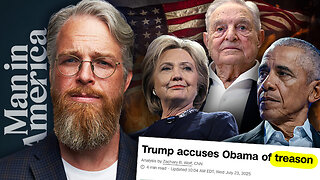 1:05:28
1:05:28
Man in America
15 hours agoTREASON? Obama, Hillary, and Soros in the New World Order Agenda EXPOSED w/ Mel K
92.3K84 -
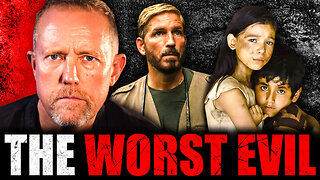 2:22:46
2:22:46
The Connect: With Johnny Mitchell
15 hours ago $7.03 earnedOne Man's Mission To Stop Human Trafficking: How A Billionaire Mercenary Saved Hundreds Of Children
27.1K18 -
 2:35:13
2:35:13
Tundra Tactical
11 hours ago $14.16 earned🔫 California Ammo Win, Sig Sauer P320 Controversy, Meme Review & Would You Rather! 🎉🔥
44.5K7 -
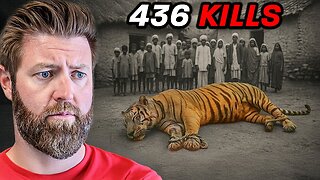 16:24
16:24
Forrest Galante
8 hours ago6 Deadliest Man Eaters to Ever Exist
29.8K11 -
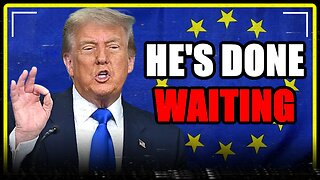 10:14
10:14
MattMorseTV
13 hours ago $16.21 earnedThe EU is in HOT WATER.
97.7K60 -
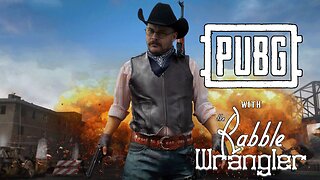 6:51:32
6:51:32
The Rabble Wrangler
1 day agoPUBG with The Best in the West!
27.3K -
 3:57:19
3:57:19
EvilT4000
11 hours ago $9.50 earnedSaturday.....🟢For energy and focus click my Dubby link!
37.1K4 -
 3:02:55
3:02:55
SlingerGames
8 hours agoSpartan Night - Halo and More | Creator for @SELFMADEGGS
24.1K